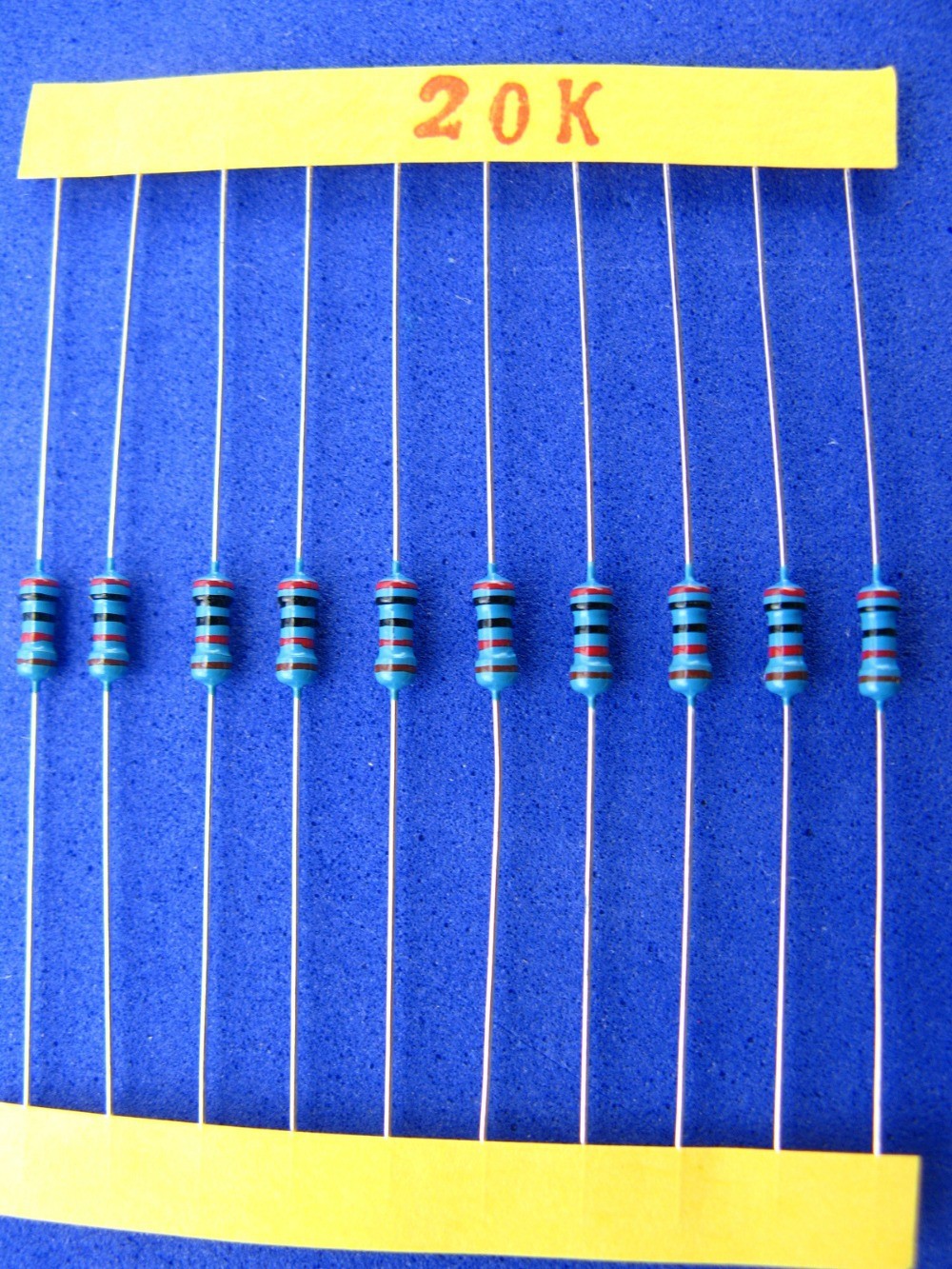- You have no items in your shopping cart
- Subtotal: ₦0.00
The 20KΩ 1/4W resistor is a fixed resistor with a resistance value of 20,000 ohms and a power rating of 1/4 watt (0.25W). It is widely used in electronic circuits for tasks such as current limiting, voltage division, and biasing components. Its higher resistance value makes it suitable for applications requiring high impedance.
Key Features:
- Resistance value of 20KΩ (20,000 ohms)
- Power rating of 1/4 watt (0.25W)
- High stability and reliability
- Low tolerance variations
- Suitable for a variety of electronic applications
Technical Specifications:
- Resistance Value: 20KΩ (20,000Ω)
- Power Rating: 1/4W (0.25W)
- Tolerance: ±5% (standard tolerance; other tolerances available upon request)
- Temperature Coefficient: ±100 ppm/°C (typical)
- Operating Temperature Range: -55°C to +155°C
- Body Color: Typically blue or brown (varies by manufacturer)
- Lead Material: Tin-plated copper
- Dimensions: Standard axial lead dimensions, typically 2.4mm in diameter and 6.3mm in length (may vary slightly by manufacturer)
Applications:
- Current Limiting: Controls current flow to protect sensitive components.
- Voltage Division: Creates voltage dividers for signal processing and measurement.
- Load Resistor: Provides load in electronic circuits and power supplies.
- Biasing: Suitable for biasing transistors and other active components.
- General Purpose: Ideal for use in various electronic devices and systems.
Usage:
- Identify the correct resistor value by its color bands or markings.
- Solder the resistor into the circuit, ensuring proper orientation of the leads.
- Verify the resistor’s connections to ensure it is correctly integrated into the circuit.
Caution:
- Do not exceed the resistor’s power rating to prevent overheating and damage.
- Handle with care to avoid bending or breaking the leads.
- Verify the resistor value and tolerance to ensure it meets the requirements of your application.
Datasheet:
For detailed technical specifications, refer to the 20KΩ 1/4W Resistor Datasheet.










